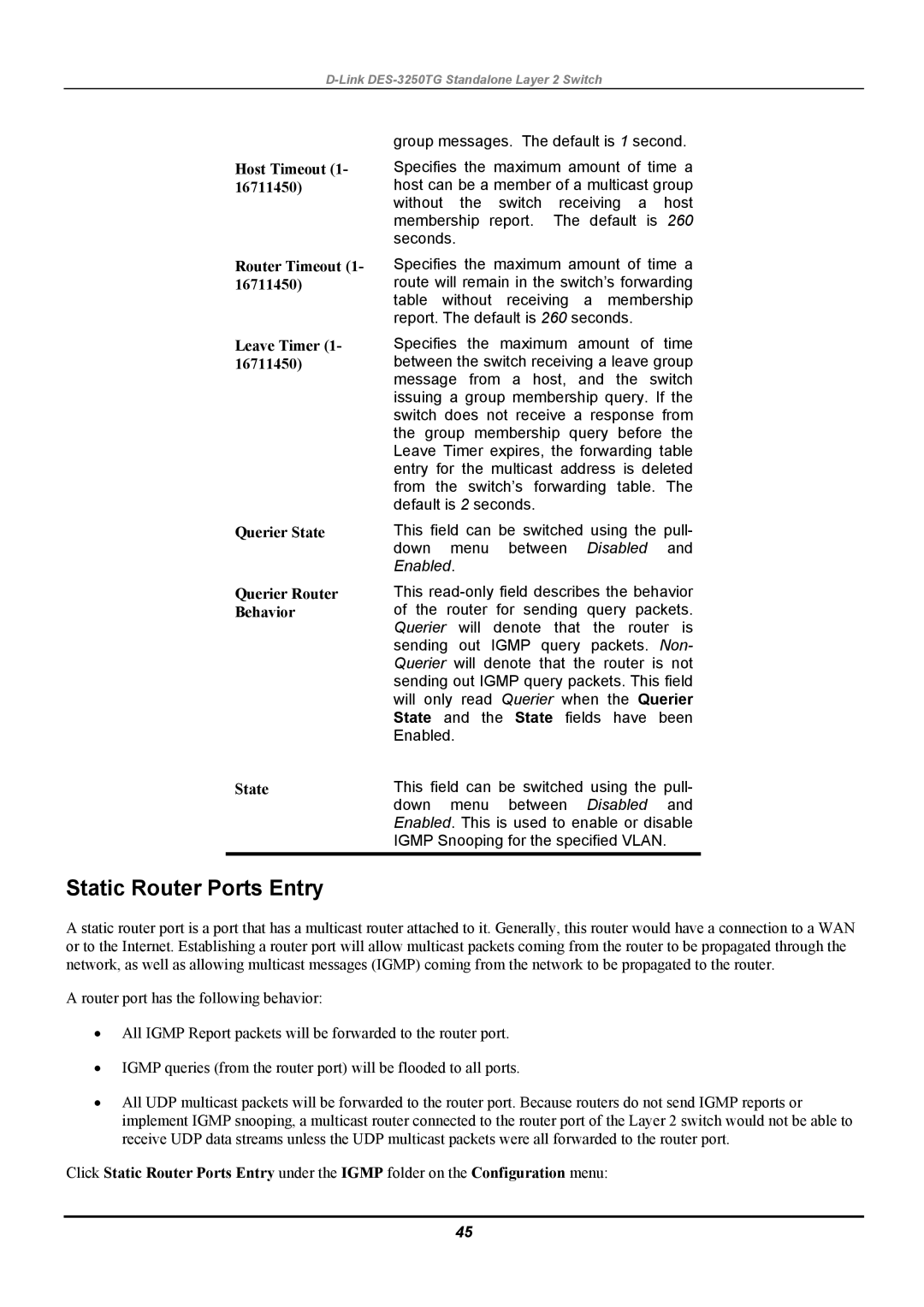
D-Link DES-3250TG Standalone Layer 2 Switch
Host Timeout (1- 16711450)
Router Timeout (1- 16711450)
Leave Timer (1- 16711450)
Querier State
Querier Router Behavior
group messages. The default is 1 second.
Specifies the maximum amount of time a host can be a member of a multicast group without the switch receiving a host membership report. The default is 260 seconds.
Specifies the maximum amount of time a route will remain in the switch’s forwarding table without receiving a membership report. The default is 260 seconds.
Specifies the maximum amount of time between the switch receiving a leave group message from a host, and the switch issuing a group membership query. If the switch does not receive a response from the group membership query before the Leave Timer expires, the forwarding table entry for the multicast address is deleted from the switch’s forwarding table. The default is 2 seconds.
This field can be switched using the pull- down menu between Disabled and Enabled.
This
State | This field can be switched using the pull- |
| down menu between Disabled and |
| Enabled. This is used to enable or disable |
| IGMP Snooping for the specified VLAN. |
Static Router Ports Entry
A static router port is a port that has a multicast router attached to it. Generally, this router would have a connection to a WAN or to the Internet. Establishing a router port will allow multicast packets coming from the router to be propagated through the network, as well as allowing multicast messages (IGMP) coming from the network to be propagated to the router.
A router port has the following behavior:
•All IGMP Report packets will be forwarded to the router port.
•IGMP queries (from the router port) will be flooded to all ports.
•All UDP multicast packets will be forwarded to the router port. Because routers do not send IGMP reports or implement IGMP snooping, a multicast router connected to the router port of the Layer 2 switch would not be able to receive UDP data streams unless the UDP multicast packets were all forwarded to the router port.
Click Static Router Ports Entry under the IGMP folder on the Configuration menu:
45
